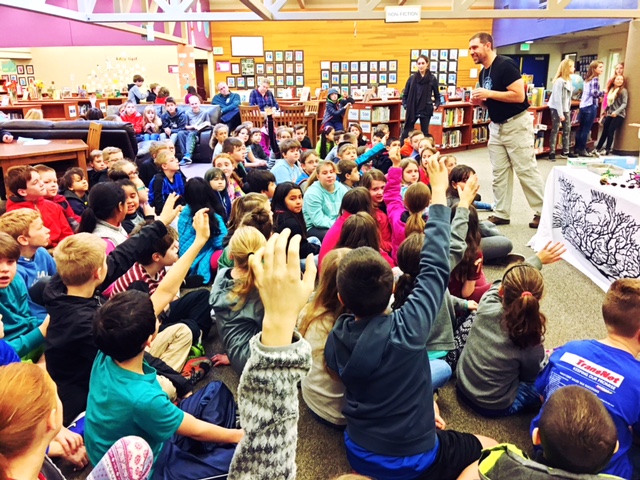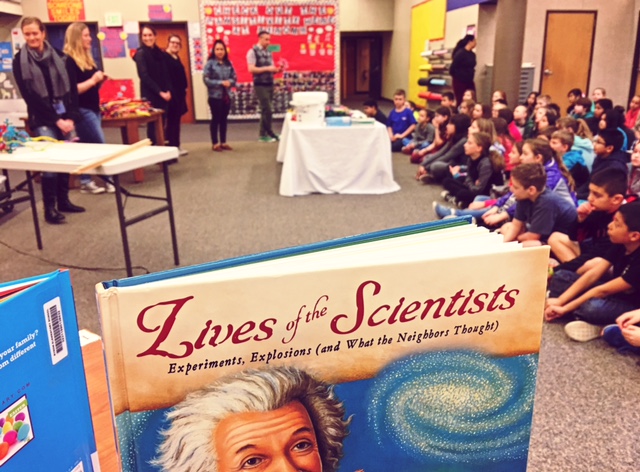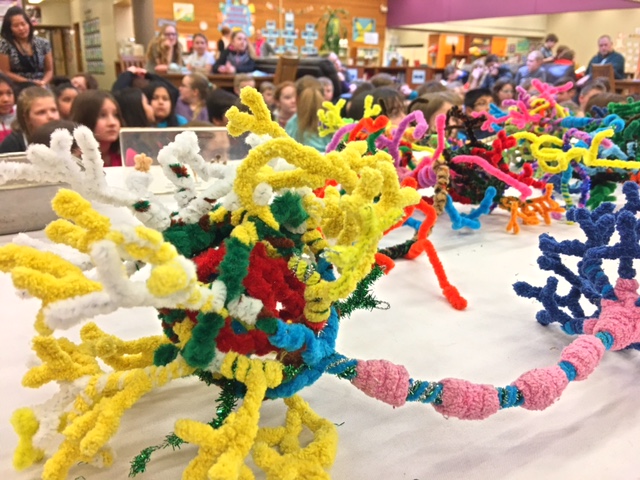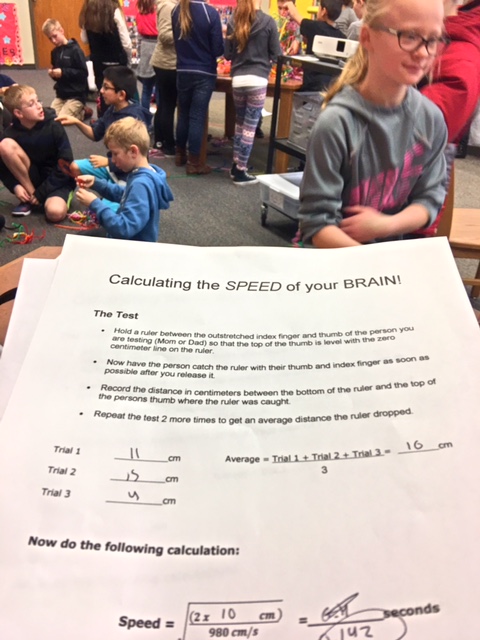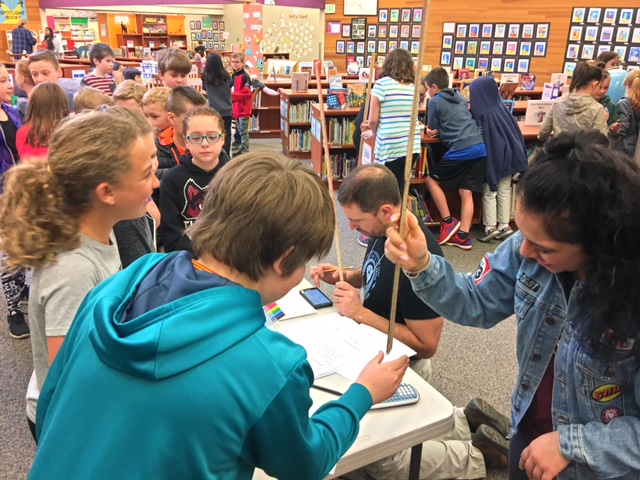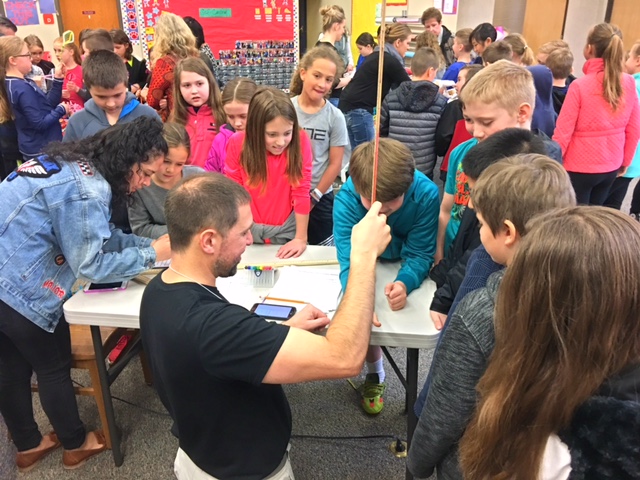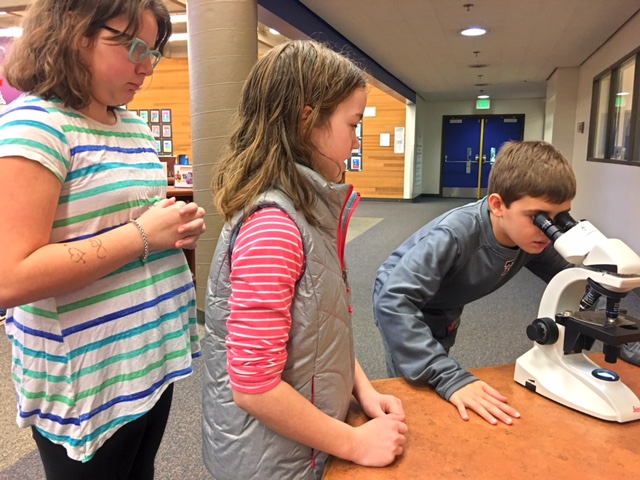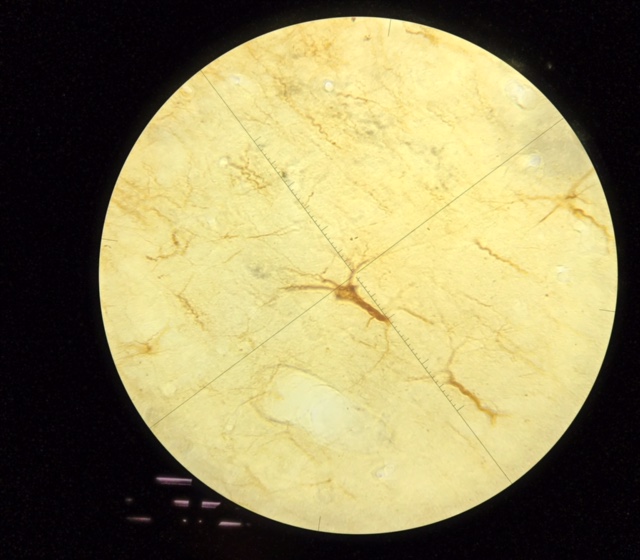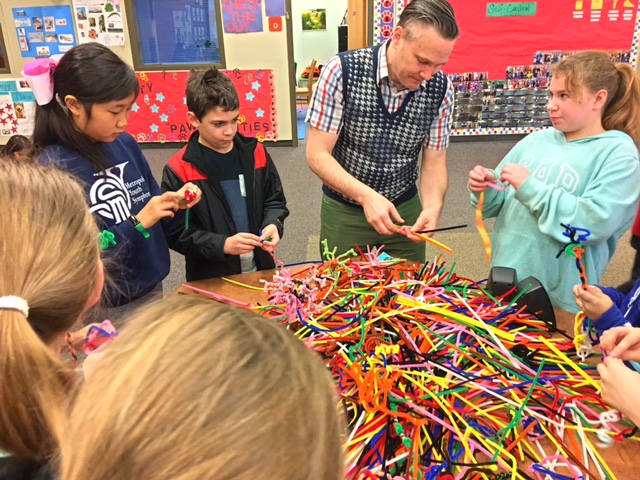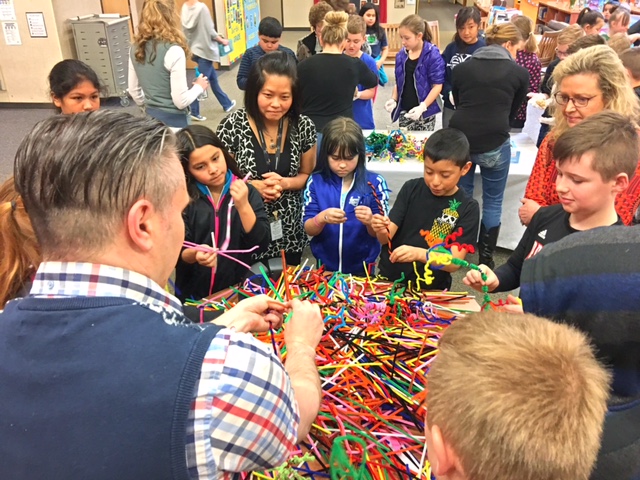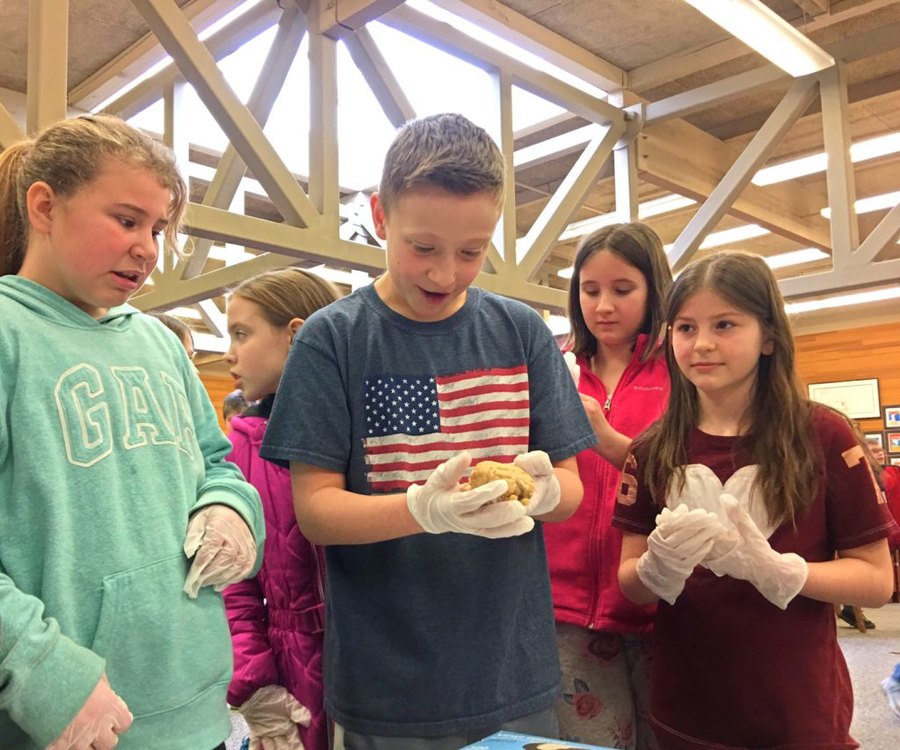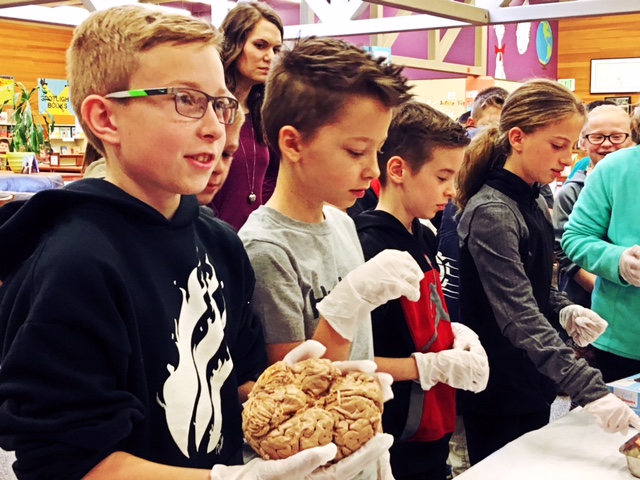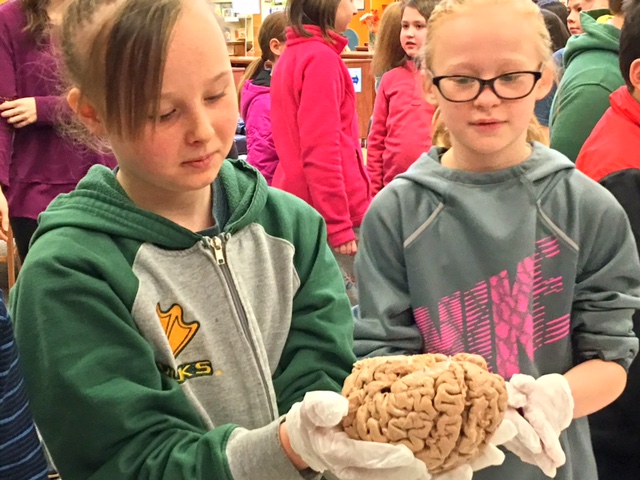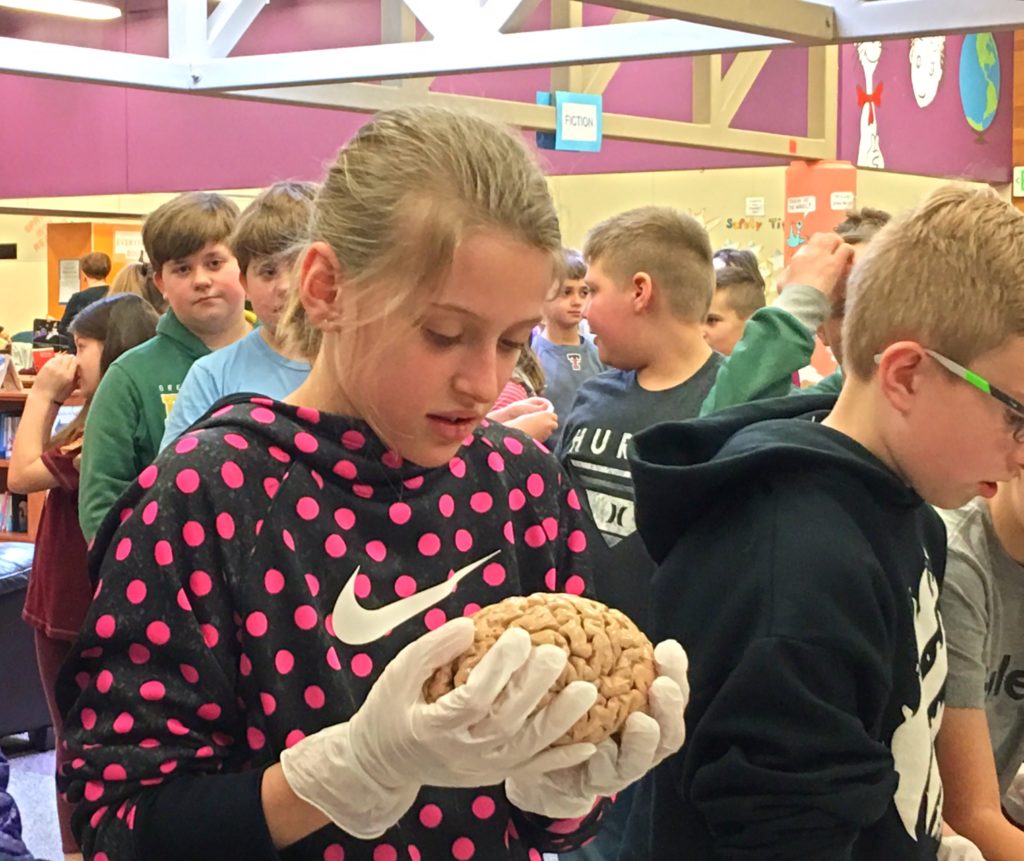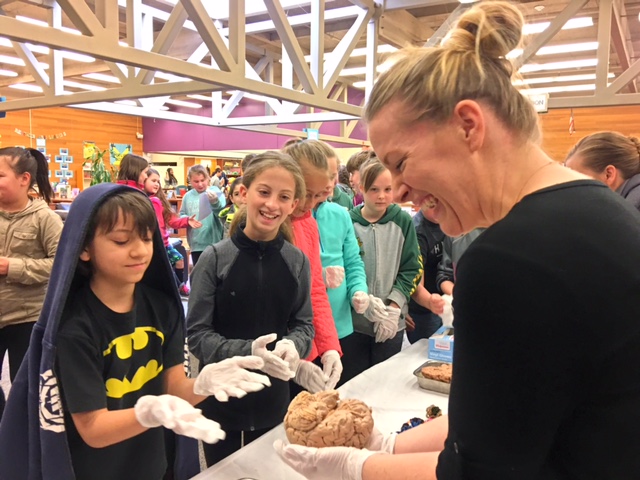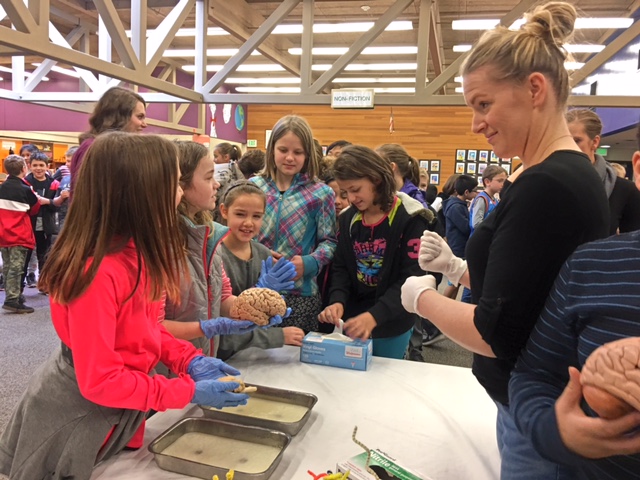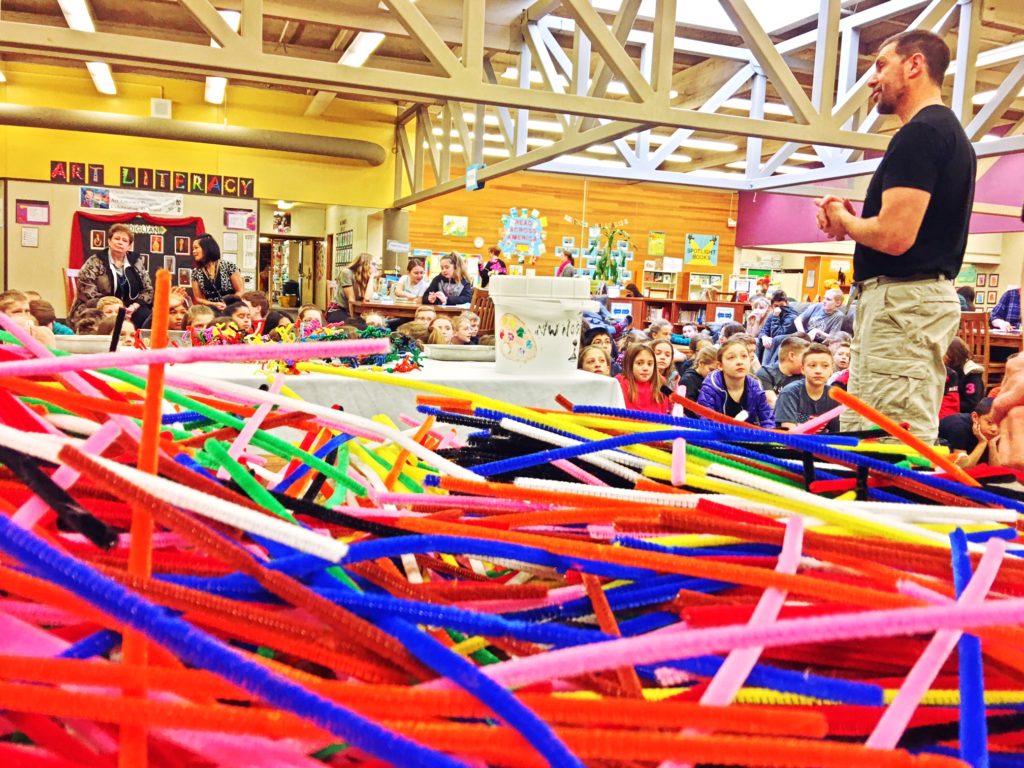NW Noggin visited Edward Byrom Elementary School out in Tualatin this week.
We came with an enthusiastic group of volunteer educators, including Sulema Rodriguez, Jessica Patching-Bunch, Aliese Poole, and Andrea Anaya from Psychology at Portland State University, and Kim Engeln, Christina Williams and Dr. Dale Fortin from Neuroscience at OHSU!
We met with three fourth grade classrooms, totaling about 90 students!
We met in the school library where our developing experts in science education fielded many questions about our brains and behavior.
We talked about neurons, how they work, how they change and how many we have. It turns out, of course, that these students have many more than we do!
Students were also curious about how brains can be damaged. We had lively discussions about concussions and other brain injuries and why it’s important to wear a helmet. We also talked about what happens to your brain when you have a stroke (there were a number of students who knew someone who had suffered a stroke and really wanted to know what that meant).
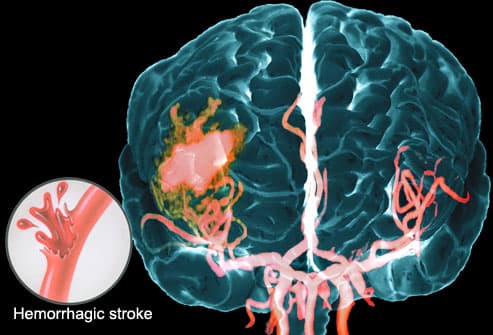
Our volunteers then broke into three different stations and invited the students to join us at each one.
Dale put together an activity that allowed students to calculate their “brain speed.” Students determined their visual motor processing time by dropping a meter stick through their hands and recording exactly where they were able to grab it. Students then had to do some “weird math” (as they called it) to calculate their reaction time (“weird math” at the link below!)…
LEARN MORE: Calculating the SPEED of your BRAIN
Dale also brought along a microscope, so students could investigate individual cells and slices from a primate brain. They were able to practice steering a “brightfield” microscope (where the specimen is dark, and the field surrounding it is brightly lit) to find specific neurons in a stained sagittal section of a macaque brain…
Gotcha! A basket cell from the cerebellum! These cells inhibit other important cerebellar neurons called Purkinje cells, which are known for their elaborate and extensive forests of dendrites…
LEARN MORE: Cerebellar microcircuitry
We also had students create their own pipe cleaner neurons. They were very curios to know why neurons come in so many different sizes and shapes, and this activity gave us a great opportunity to discuss it with them!
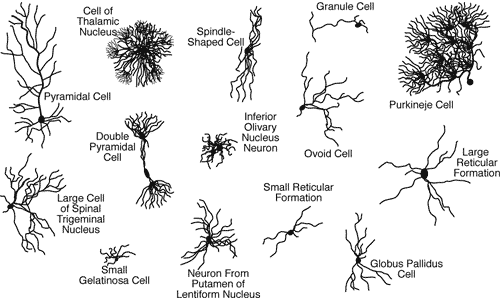
LEARN MORE: How-to-make-a-pipe-cleaner-neuron
Of course one of the favorite stations was the brain table. Many of the students revisited two or three times to check out the variety of human, sheep, mouse and other animal brains available to view and hold. Overall feedback from the group was that the brains were super cool – but also slimy and gross…
…and fascinating. And compelling…
NW Noggin Resource Council member for communication, Jessica Patching-Bunch, who bravely attended the brain table, noted that there were observations made about the difference in “texture” between the human and sheep brains due to the amount of sulci and gyri. She was particularly impressed by one student who already knew the foundations for experience-dependent learning and neural networks. ” When you do something your brain memorizes it from the cells talking to each other so that the next time you do it it’s easier…”
Many thanks to the fourth grade teachers at Byrom Elementary, and to Dr. Dale Fortin for putting us in touch with them and their insightful and curious students!





